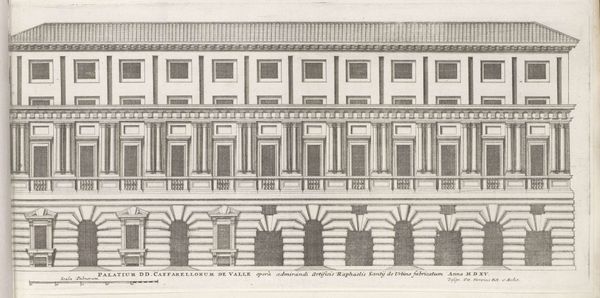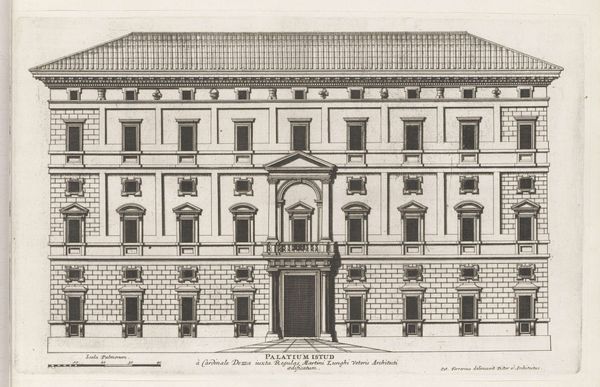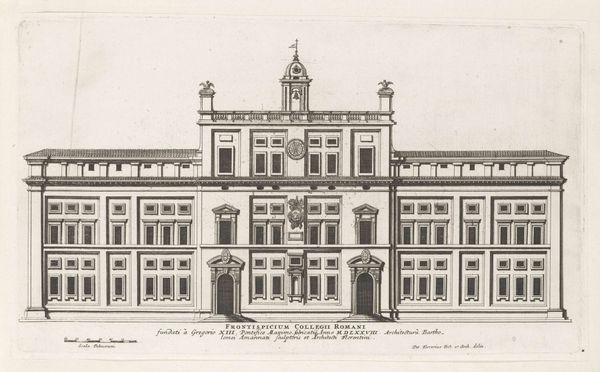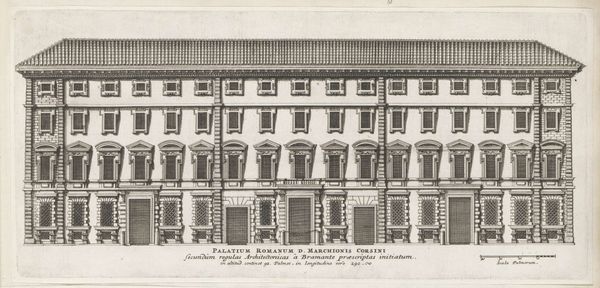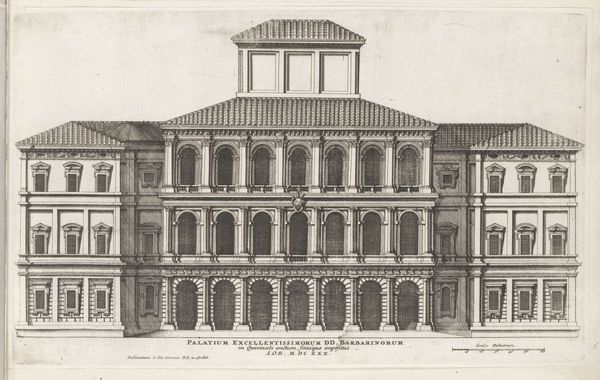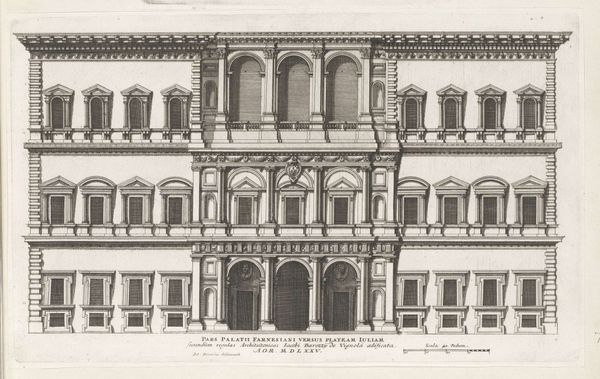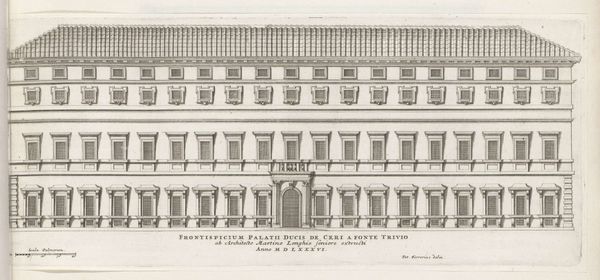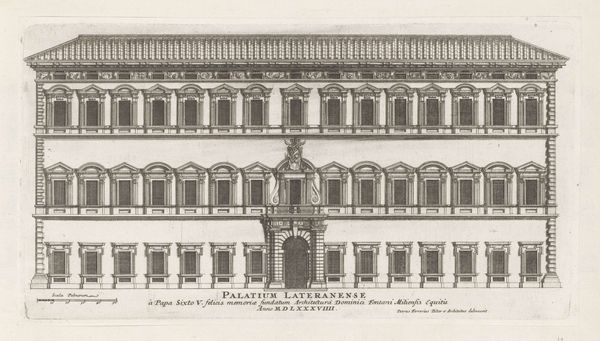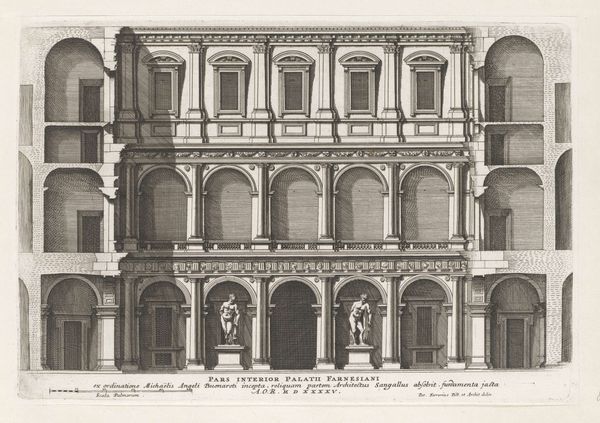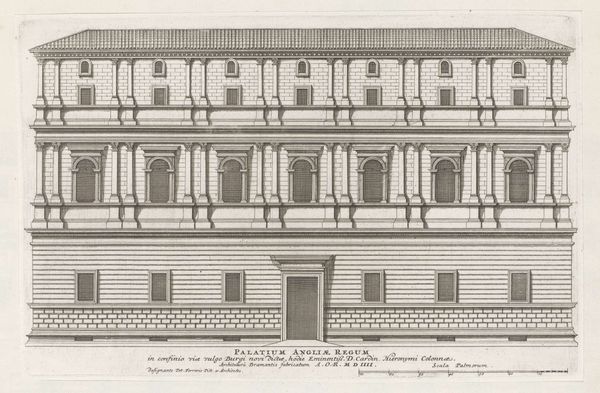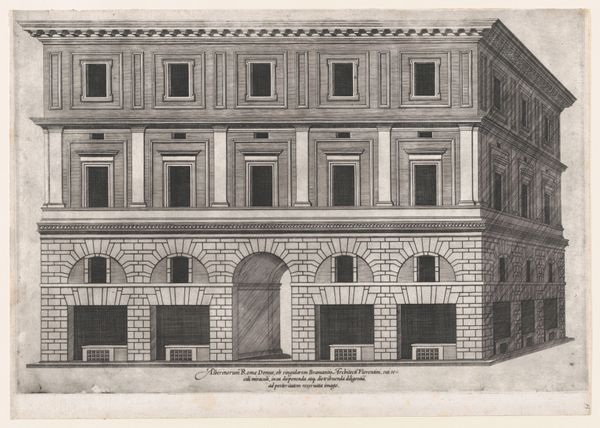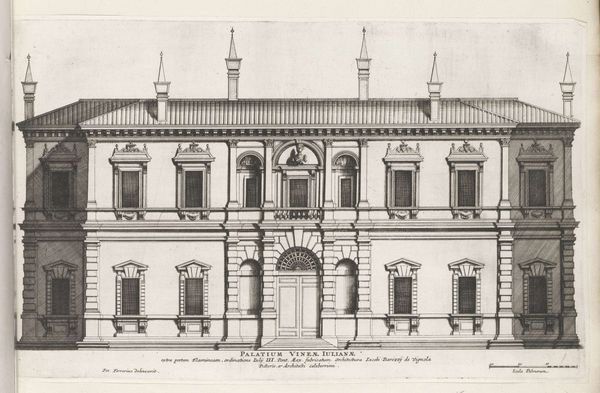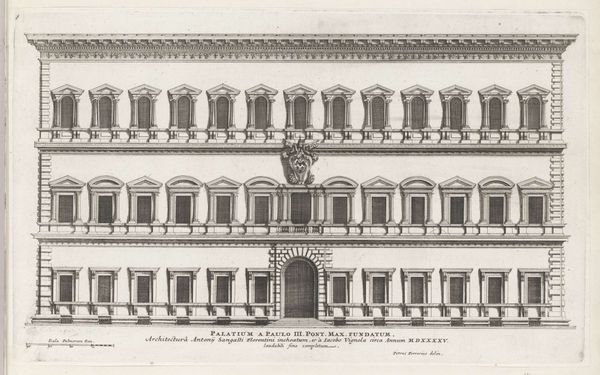
print, engraving, architecture
#
baroque
# print
#
line
#
cityscape
#
engraving
#
architecture
#
building
Dimensions: height 186 mm, width 411 mm
Copyright: Rijks Museum: Open Domain
This etching, made by Giovanni Battista Falda, presents the facade of the Palazzo Pamphili in Rome. Notice the eagle perched atop the left-hand side of the structure. This is no mere bird; it is a powerful emblem, the heraldic symbol of the Pamphili family, elevated high for all to see. The eagle motif finds its roots in ancient Rome, where it represented the god Jupiter and imperial authority. As empires rose and fell, the eagle adapted, reappearing on the standards of Charlemagne and later, the Holy Roman Emperors, each time signifying dominion and power. Consider how this symbol is not static. Its meaning evolves through cultural memory. Here, the Pamphili family consciously evokes this lineage, embedding their aspirations within a history of power. It’s a psychological strategy, linking the family's identity to a collective desire for order and authority. This emblematic choice engages viewers on a subconscious level, stirring feelings of respect or perhaps even awe. Like a recurring dream, the eagle resurfaces, transformed yet recognizable, echoing through the corridors of time.
Comments
No comments
Be the first to comment and join the conversation on the ultimate creative platform.
